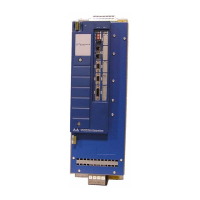Kollmorgen - December 2011 235
MMC Smart Drive Hardware Manual - MOTOR CABLES & CONNECTORS
9 Motor Cables & Connectors
Kollmorgen offers many cables that connect directly from the MMC Smart Drive’s F1/
F2 connector to various Kollmorgen motors. These cables are described in detail in
section 5.1.6.2 on page 90.
This section describes additional cables and connector kits that can be used to
connect Kollmorgen motors and drives, as well as providing cable installation
guidelines.
9.1 Flex Cable Installation Guidelines
Follow these guidelines for any flexing cable application:
• Cable should be hung suspended for 48 hours to develop its most natural “set*
and lay” prior to installation
• A cable should be installed with, not against, its natural set
• Using strain relief fittings at both ends of the cable will reduce conductor breakage
at the flex points
• If there is any kink in a cable after installation, it will always remain and eventually
cause a cable failure
• After installation, the most critical factors in the cable are the minimum bend
radius and the reel tension
* Note: The natural set occurs during the manufacturing of the cable. The cable is
cured in one direction on the reel with a notable difference in its ability to be flexed one
way versus the other.
When using specially designed flex cables, the following five criteria must be
considered:
• Bending Radius
• Cable Tension
• Operating Speed
• Temperature
• Ampacity
Bending Radius and Cable Tension are discussed in the following sections.
9.1.1 Bending Radius
The following guidelines recommended by the ICEA standards are intended to
optimize cable life:
• Minimum Bend Radius (Shielded Feedback Cables) = 12 times the Cable Diame-
ter
• Minimum Bend Radius (Shielded Power Cables) = 12 times the Cable Diameter
Reduced bending radii result in reduced cable life due to increased stress on the
copper conductors and overall distortion of the cable. Therefore, reduced radii should
only be considered for applications in which other factors, such as reduced cable
tension, lower operating speed, and ambient temperature are more favorable to cable
life, or where the mechanical limitations of the installation do not allow the optimum
radius.

